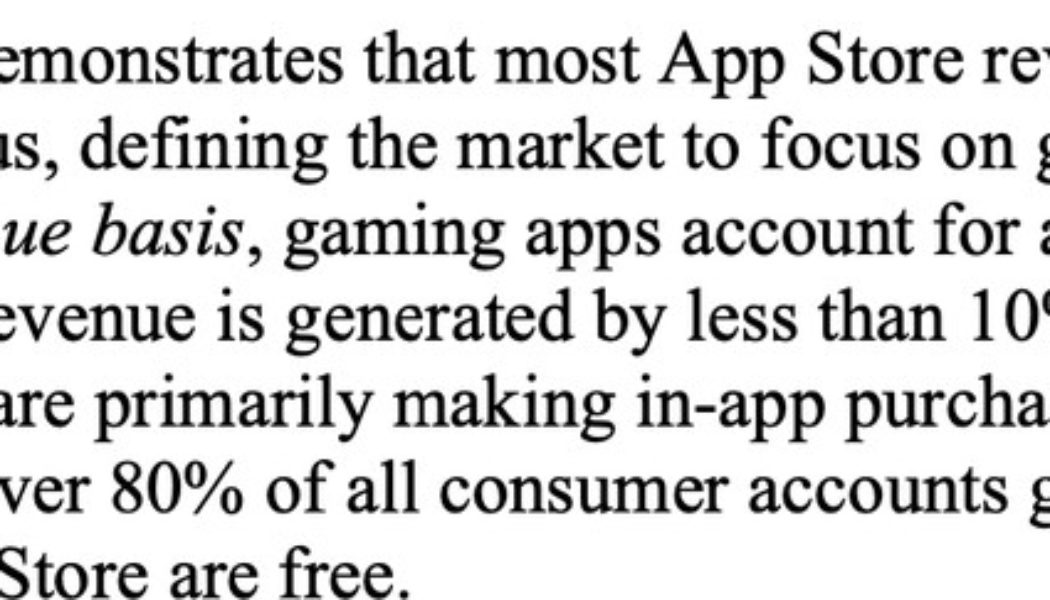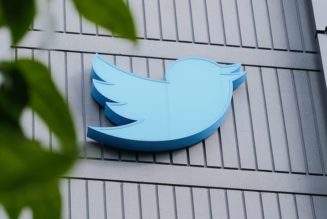The App Store may never be the same.
Today’s ruling from Judge Yvonne Gonzalez Rogers in the Epic v. Apple trial mandates that Apple must allow all developers the option to point directly to other payment systems, in addition to Apple’s own in-app purchasing system (IAP). It’s a decision that cuts right to the heart of the roughly $19 billion a year the App Store brings in for Apple, because at the end of the day, the App Store makes most of its money off in-app purchases inside free-to-download games.
It’s not a total sledgehammer to the heart of Apple’s walled garden; the ruling still maintains the App Store as the only place that users can go to to buy or download new apps, and doesn’t challenge Apple’s 30 percent cut of those purchases. And the ruling only technically impacts US-based companies for now, which Bloomberg notes only makes up about $6.3 billion (or about a third) of Apple’s global App Store revenue,
But for companies that make free apps with in-app purchases, subscription apps, and virtually any kind of app or service that doesn’t require an upfront payment to purchase the app itself, it’s a whole new ball game.
An often-overlooked fact about the App Store is that it is a remarkably top-heavy enterprise. It would only take a few developers to make a huge impact on Apple’s roughly $19 billion per year business.
Reports from SensorTower cited by The New York Times in 2020 claimed that more than 95 percent of the App Store’s total revenue comes from the top 2 percent of developers, with the remaining 98 percent of developers making less than $1 million per year (which, in turn, qualifies them for reduced fees through Apple’s App Store Small Business Program).
And, as the injunction reveals, the vast majority of App Store billings come from gaming. Games account for approximately 70 percent of the entire App Store’s revenue, and 98 percent of in-app purchase revenue. The App Store is a game store, and more specifically, it’s a game store for massive, free-to-play games that make nearly all of their money from in-app items.
A quick glance at lists of the top-grossing apps on the App Store seems to confirm those numbers: almost every single game on the list is a free app that relies exclusively on in-app purchases to make money (with the exception of Minecraft, which is a paid app with in-app purchases).
:no_upscale()/cdn.vox-cdn.com/uploads/chorus_asset/file/22840276/image.png)
It won’t take many customers changing their mind to make big waves in how much money Apple makes, either. As the ruling explains, the 70 percent of App Store revenue from games comes from just 10 percent of all App Store users; over 80 percent of customer accounts generate “virtually no revenue” at all for either Apple or developers.
That assumes, of course, that developers are willing to adopt the soon-to-be added option for alternative payment methods when the court mandated date of December 9th arrives. And that’s pending any appeals putting this ruling on hold — Epic has already announced its intent to appeal.
There are plenty of details that will need to be worked out. Will developers be able to offer a PayPal or Stripe button, or will they have to link out to external sites? Will Apple be able to require that developers charge the same price for third-party payments, or will devs offer discounted prices to account for not having to pay Apple’s cut?
Some developers immediately announced plans to offer a payment alternative. Hey, which had its own controversial fight with Apple last year over in-app payments, said less than an hour after the news broke that it would implement a version of its app that allows users to directly pay as soon as possible. Hey presumably won’t be the only major app to make the switch, either.
But there will likely be plenty of developers who won’t offer an alternative payment — Apple’s own payment systems do offer some benefits, as Halide developer Sebastiaan de With tells The Verge. “We’re honestly quite pleased with the smoothness of Apple’s offering for payments — from handling taxes all over the world to refunds, Apple Pay, and more — so we’re unlikely to change the way we do business at present.” Smaller developers may simply not have the resources (or the desire) to implement their own payment systems.
The new change may mean that more money could flow through iOS apps than ever before. In theory, there’s nothing stopping Netflix from putting a full signup queue in its app now, instead of the simple sign-in button it currently offers for new accounts — or letting Spotify offer its Premium subscriptions directly to customers without Apple taking a cut.
The ruling builds on a smaller App Store change made last week. Apple had previously conceded to let “reader” apps like Spotify and Netflix link out to a payment page in a settlement with the Japan Fair Trade Commission, but that applied to apps that didn’t make Apple money anyway. Today’s court injunction, on the other hand, applies to all apps — including the ones that contributed the most to the App Store’s bottom line.
Under the new rules, Apple won’t see its full cut of many big apps’ payments anymore. If developers — and customers — take up the chance to pay for their in-game items and dating app swipes in a different way, Apple may not have just lost a big chunk of control over the App Store; it might be losing a big chunk of its services business for good.









